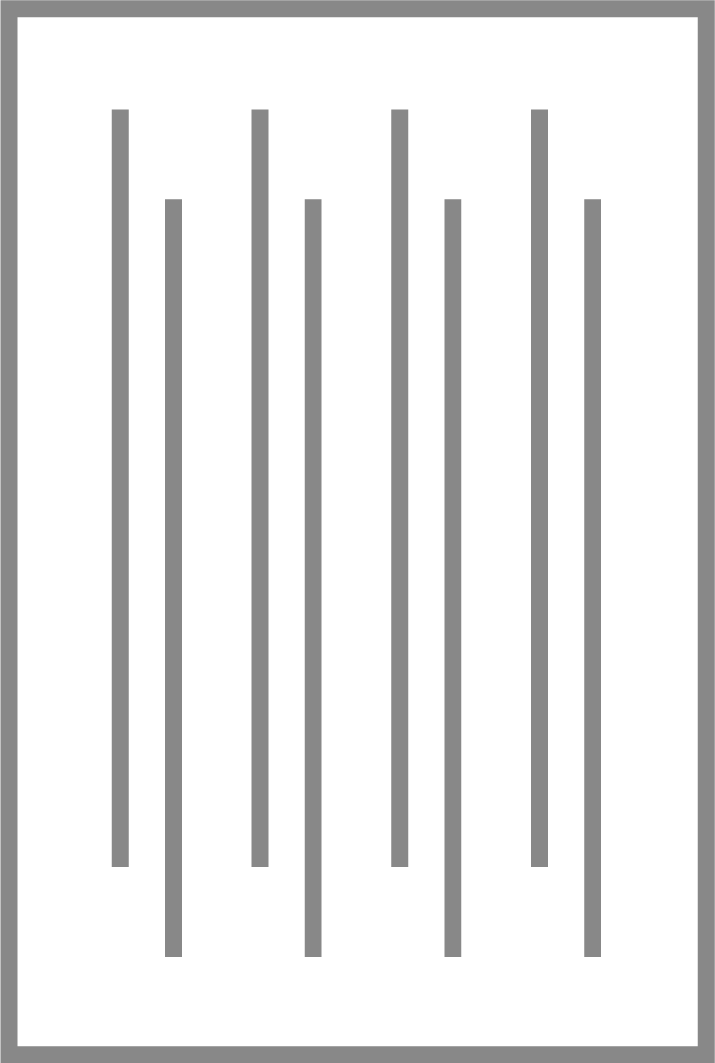JIZI WANG (1941-2015)
Waterfall presents the exceptional works of Jizi Wang, co-curated with Chunchen Wang, the head of the Department of Curatorial and Research at CAFA museum in Beijing, China, as well as an Associate Professor at the Central Academy of Fine Arts. Displayed are four selections from 2014, most recently shown at the British Museum in 2020. For decades, the artist long searched for the unification of styles, cultures, and ideas that both honored tradition and reinforced themes of universal oneness and personal expression.
Jizi Wang (1941-2015) also known as Wang Yunshan began his artistic career in the late 1950s. Internationally regarded for his large-scale ink paintings and scrolls, Jizi utilized traditional Chinese materials to create contemporary readings of Chinese cultural life and attitudes.
Using thick layers of ink and smooth brushstrokes he depicts vast, magnificent universes of unpredictable tonal variations and rich multi-dimensional spiritual spaces.
Jizi was mostly self-taught, combining the techniques and philosophy of traditional Chinese ink painting with his individualistic expression inspired from early modernist artists in the West. When he was younger, he lived and worked in Dongguan and Zuanhua in Hebei. During the 1950’s, he created calligraphy paintings and charcoal portraits. In the 1960’s, he was a blacksmith and a carpenter and later ran an arts and crafts workshop before he opened an art store to make a living. At age 60, Jizi became ill and his miraculous recovery resulted in a shift in his lifestyle and his art.
He made advances in landscape painting by merging together the surging elements of Song dynasty landscapes with the mysterious emptiness of interstellar space. Mountains as vast as a series of waves, clouds sweeping across them like the froth from waves, mysterious moons and stars - all of these allow the viewer to enter a realm in which one can “saunter around”. After exposure to Western modernist art, Chinese Contemporary Art reflected a rapidly changing society and broadening of global art. Jizi’s paintings have absorbed the visual clashes, and sense of power from Western art, which give his work a strong visual and psychological tension. His personal mystical experience as he matured, inspired his unique spiritual interactions with the universe.
In his series of ink paintings, Beyond the World, Jizi combines Chinese ancient mythology with the Western science fiction world, showcasing his unique perception of the universe and its inhabitants. Jizi expands the flat space within the artwork, creating multiple spaces within the celestial realm and the universe. The imagery of multiple mountains, clouds, and suns collectively forms his envisioned cosmic galaxy. The depictions of spirits and extraterrestrial beings represent his exploration of divine creatures in the Western world while also merging and continuing the tradition of ancient Chinese immortal paintings. Jizi's artworks convey a sense of yearning and trepidation towards the mysterious beings that exist in the universe, as well as revealing his desire to transcend beyond the boundaries of the world.
The "home" in Jizi's work My Home is in There carries three layers of meaning: the longing for one's hometown, the yearning for the cosmic space, and the boundless exploration of the artistic path. In the first layer of meaning, Jizi uses more brushstrokes to depict the proximity and distance of space, expressing the sense of a distant home. The complete image of the moon in the middle of the painting and the female figure on the right side representing the mother, symbolize Jizi's longing for the home in reality. In the second layer of meaning, the radiance emanating from the distant sky and the layered curves represent Jizi's aspiration for the mysterious universe. The third layer of meaning reflects Jizi's spiritual world and mastery of the artwork. When Jizi created this painting in 2014 at the age of 74, he was still filled with passion and imagination for creation. Art became his ultimate home.
In The Order in Forming, Jizi demonstrates his understanding of traditional Chinese freehand forms and Western modernist painting, combining these two approaches to portray what he perceives as the beginning of the world. The absence of boundaries in the imagery and the distinctively segregated geometric shapes create a strong contrast, representing the concept of chaotic creation depicted in ancient Chinese mythology. Gradually, ordered geometric forms emerge from the void, revealing the manifestation of order within. Jizi employs the language of Chinese ink and the tradition of expressive painting to convey the sense of order found in Western modernist art. The artwork also presents the mysterious qualities that both Chinese freehand style and Western abstraction point towards.
In The Word is the Way, Jizi showcases his understanding of Western philosophy while incorporating the traditional characteristics of ancient Chinese painting. By integrating the seal form, derived from Western modernism, into the artwork, he breaks away from the original meaning and function of seals in painting. Instead, he merges the words within the seals with the meanings of words in Western philosophy, making them an integral part of the composition. Jizi aims to express through the words in the seals the referential nature of words in modern painting. The geometric representation of the "way" that traverses the composition acknowledges the significance of words while also attempting to convey that words, while aiding understanding, also interfere with the interpretation of painting.




















